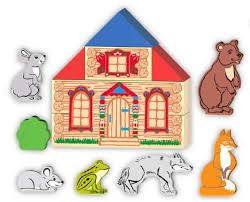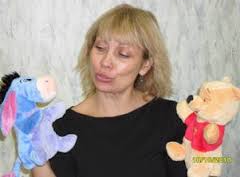LESSON: Unit 4
The world around us:Animals
School: secondary school named after K.D.Ushinsky
Date: Teacher name: Umarova Marzhan Bayuzakovna
CLASS: 1''Ә''
Number present:
absent:
Learning objectives(s) that this lesson is contributing to
1.S3 pronounce basic words and expressions intelligibly
1.S5 produce words in response to basic prompts
1.L1 recognise short instructions for basic classroom routines spoken slowly and distinctly
1.L3recognise with support simple greetings
1.L3recognise the spoken form of a limited range of basic and everyday classroom words
Lesson objectives
All learners will be able to:
- pronounce basic words denoting animals
- recognise simple greetings
- recognise basic colours
Most learners will be able to:
- produce words in response tobasic prompts
- recognise basic intonation distinguishing questions from statements
- understand the meaning of new words
- participate in short conversations on a specific topic
Some learners will be able to:
- respond appropriately to some questions
- use some short answer forms correctly
Previous learning
Unit "The World Around Us" is based on knowledge and language skills from Units1, 2, 3. Students need to know the names of animals around us in their native language.
Plan
Planned timings
Planned activities (replace the notes below with your planned activities)
Resources
Beginning
ORGANIZATIONAL MOMENT
Prior Knowledge- Pupils recognize simple greetings
Hello, children! Let's sing a song!
Group 1: Hello! Hello! Hello!
Hello! Hello! Hello!
Hello! How are you?
Group 2: Hello! Hello! Hello!
Hello! Hello! Hello!
Hello! I am fine! Thank you!
Teacher: The topic of our lesson is “Animals”. (Point to the pictures of animals on the board)Today we’ll name some animals in English.
Song “Hello”
https://www.youtube.com/watch?v=AdukBVPk8Jw
Middle
SPEAKING DRILLS
All pupils pronounce basic words denoting animals.
Most pupils recognise basic intonation distinguishing questions from statements.
Some pupils respond appropriately to some questions.
Teacher talks to the class using puppet dolls representing animals from the fairy tale “The Little House": Hello! My name is Mouse. What’s your name?
How are you? How old are you?
PLAYING
Pupils understand the meaning of words denoting animals.
Game "Guess what animal it is"
Pupils in turn go to the board and describe an animal from the fairy tale, without naming it. The rest of the pupils have to guess.
FORMATIVE ASSESSMENT LISTENING
Pupils recognise basic colours and animals.
Point and colour:
Fox is red.
Bear is brown.
Mouse is blue.
Wolf is black.
Rabbit is pink.
CREATIVE WORK
Most pupils participate in short conversations on the topic «The Little House".
1) Watch the cartoon "The Little House".
2) Staging
Characters: a mouse, a rabbit, a wolf, a fox, a frog and a bear.
LISTENING
Pupils recognise basic words and sounds produced by animals.
- Besides the animals from the fairy tale, there are many other different animals. Let's listen to a song about them.
2) Listen to the sounds and look at the pictures of animals.
3) Judging by the sounds you hear guess what animal produces them.
WORKING WITH CARDS
Pupils match animals with their habitats.
1) Show where the animals live. Match the pictures of animals to their habitats.
PLAYING COMPUTER GAMES
All pupils recognise basic words denoting animals.
Most pupils recognise basic questions.
Some pupils respond appropriately to some questions.
1) Open your personal computers. Choose the right answer for each of the questions about animals by clicking it.
Puppets
Worksheetsof animals
http://ejka.ru/blog/zagadki/1.html
http://deti-online.com/skazki/russkie-narodnye-skazki/teremok/
CD
http://get-tune.net/?a=music&q=
End
3-5
minutes
FEEDBACK
Pupils produce words in response to basic prompts.
Show your mood
Ø happy like a monkey
Ø sad like a wolf
Ø energetic as a lion
Additional information
Differentiation – how do you plan to give more support? How do you plan to challenge the more able learners?
Assessment – how are you planning to check learners’ learning?
Cross-curricular links
Health and safety check
ICT links
Values links
- more support can be given during elicitation, instruction and questioning phases of the lesson by nominating learners to answer items relating to more high frequency vocabulary to build confidence through participation.
- more able learners will be challenged by prompting their groups to develop more elaborate types of animals to narrate.
- through questioning and the redirecting of questioning in feedback activities
- through observation in group and final performance activities
Cross-curricular links
- performance arts: use gestures and movements imitating animals
- ICT: playing computer games
- Science: habitats of animals
- Drama: staging
- story
- the world around us
- Art: sticking, colouring
Health and safety check
- white board is used no more than 5 minutes
- personal computers are used no more than 10 minutes
- use water based markers
- use mucilage glue
Values links
- when students work in groups, they will learn to be polite and respectful to each other
Reflection
Were the lesson objectives/learning objectives realistic?
What did the learners learn today?
What was the learning atmosphere like?
Did my planned differentiation work well?
Did I stick to timings? What changes did I make from my plan and why?
Use the space below to reflect on your lesson. Answer the most relevant questions from the box on the left about your lesson.
Summary evaluation
What two things went really well (consider both teaching and learning)?
What two things would have improved the lesson (consider both teaching and learning)?
What have I learned from this lesson about the class or individuals that will inform my next lesson?


















